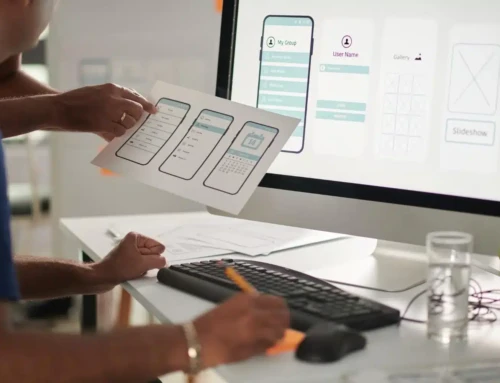The Blockchain is basically a decentralized ledger. So, for starters, you may find it helpful to learn a little about the evolution of ledgers.
In addition, it will be helpful for you to think of an actual chain. Picture a link in the chain, and see it as containing information (data). Next, observe that link open until the data has been checked or verified and secured by a miner. Then, if you are working on a public blockchain, you can picture the same link as though it was a complete oval or circle with no beginning and no end. The data is locked inside.
Miners are people who search for, locate, and procure precious metals and stones. Bitcoin miners are no different.
Located all over the planet, bitcoin miners use special equipment on their computers to help them locate transactions, compute difficult problems necessary to validate a transaction and add that transaction to the public ledger. In return for this service, the miner is often (but not always) paid in bitcoin. The blockchain then alerts the network that a particular block on the chain contains a proof-of-work and is therefore complete.
Introduction to Ledger Systems
What does a man named Luca Pacioli, living in the year 1494 AD have to do with a man named Satoshi Nakamoto, living in the year 2008 AD? The answer, both men were ledger disruptors on a grand scale. One system evolved into the information age without losing its original intent. The other method, blockchain, is busy making its own debut.
The Italian, Pacioli devised and introduced the double-entry bookkeeping ledger system, which we still use today–524 years later. Nakamoto invented a public, decentralized, transaction ledger called blockchain. Furthermore, Nakamoto’s blockchain is already a global breakthrough. Not to mention, that the blockchain is also revolutionizing the way we do things in business, social, and technology areas of life.
Today, banks function as a safe place to store wealth in the form of fiat currency and the form of precious metals. Moreover, they make their money by loaning their depositor’s money and charging interest. All banks run on a leger system, which currently exists mostly in the cloud.
Interestingly, ledgers became centralized through banks as early as 1472. Banca Monte dei Paschi di Siena was the first bank. Located in Italy, it has been in operation since its inception. Centralized banking–or centralized anything–presents a plethora of security issues.
Decentralized ledger
By comparison, the decentralized blockchain ledger is a database with no editable hardcopy. Therefore, it requires no maintenance or central authority. A global network of computers manages the database.
In addition, a variety of people called miners manage all transactions on the blockchain using their individual computers. Globally, miners continuously reconcile the database. Hence, an exclusive problem–solved by a single miner–seals the block forever. After which, the block is now a historic block in the overall blockchain. In this way, data integrity is secure.
Remember, the centralized ledger system took over 500 years to become what it is in 2018. The blockchain; however, is changing our ledger system in lightning speed. It is also changing everything in its path. The base intention of the blockchain is solid and realistic. In fact, it works well in both developed and underdeveloped countries. When capital and, or banking is not readily available–the blockchain is the answer.
Understanding the Need for Blockchain Technology
Due to the unalterable nature of a block on the chain–any industry can use it to prevent fraud. A block of transaction data, permanently documented, is part of the linear sequence of blocks on the blockchain. Likewise, the chain continues around the world validating all P2P, B2C, and B2B activity. Initially, the blockchain documentation of cryptocurrency activity was its exclusive purpose.
Currently, there are three basic types of blockchains in use. All three-use cryptography to permission participants or networks to manage the ledger. All blockchains have the power to remove a central authority from their database structure.
There are public blockchain, distributed networks running opensource code. Anyone can participate. Cryptocurrency is a perfect example of a public blockchain. Some blockchains grant permission or control to users. An example of this is the Worldwide Asset Exchange (WAX). They are a global community of gamers who buy and sell on the permission blockchain, using the WAX token.
Lastly, there are private blockchains which are businesses, memberships–like group or associations, or other organized groups sharing trusted information–which, by the way, is subjective and this must be considered on a private blockchain.
Public blockchains are more secure than permission blockchains–but they are not as fast.
One government use for blockchain that saves time and money
Traditionally speaking, a county recorder’s office in the U.S. maintains permanent records of public information. Once recorded in the public records, a deed transfers ownership of property from one entity to another. Once logged in the public records, a mortgage validates a debt–and so forth. A recorded, corrective document updates the public records–when mistakes arise. The public records maintain a semblance of integrity in this way.
Reverting to the blockchain–a new block of information would be the comparison. Mistakes in the public records are rife. Many slip by unnoticed. For example, when a mortgage company or bank fails to file a satisfaction at the time the mortgage is satisfied–it leaves the public records showing a lien on the property. On the blockchain; however, the block is sealed when the lean is satisfied. The file is available immediately.
Additionally, the public records are massive. Historic, backup electronically is almost impossible due to the amount of data. Whereas, on the blockchain, the information is already electronic and will always be accessible–albeit not correctable except by using a new block on the chain.
Food Industry example of uses for the blockchain technology
Blocks of information introduced in industries such as farming, food supply, fishing and the like are valuable. Up to now, integral maintenance of data in the industry presented challenges. This struggle for centralized control resulted in the world’s food supply managed by only a handful of corporations. Indeed, organic farmers still contest to gain a foothold, but now they see a good chance through blockchain technology.
Because blocks in the blockchain are linear, only a time stamp and a link to the previous block is necessary to find valuable information concerning how a particular food was grown, what seed was used, or even where a particular shipment of contaminated food originated. The blockchain is constantly lengthening with new blocks. There is no end unless and until a particular industry discontinues use of that particular chain.
Realizing the astronomical number of players interacting on the food chain, along with the number of opportunities to make mistakes along the way–blockchain is a godsend. By using the blockchain–it no longer matters how many companies or individuals are involved. Blockchain technology irrevocably reveals real-time entries made by real players. The blockchain is, after all, “a data stricture, which creates a digital leger of data, and then shares it with a network of independent parties.” In order to correct information in a permission block two people, each with a private key must agree.
Medical records are beginning to use blockchain technology
In the case of medical records on a permission-based blockchain, your digitally recorded, private records are on a block. You have a personal, private key and your doctor has a private key. These keys protect your particular block of medical information on the chain. It also allows for updates and corrections to the record.
The only way anyone else–like another doctor or a hospital– can view your history is if you permit them to use your private key. However, they cannot alter the record unless they have your doctor’s private key as well. Medical records show the history of a person’s health. Therefore, information once entered into a block on the chain can’t be altered.
Cryptocurrency and The Blockchain
First and foremost, Nakamoto birthed the blockchain to buy, sell, trade securely, and spend a cryptocurrency he called bitcoin. Furthermore, he invented the blockchain as a peer-to-peer (P2P) decentralized ledger. As stated above, this decentralized ledger system requires no common authority–such as a bank or other entity. Instead, each block is validated by miners, who solve a problem to confirm each transaction as legitimate.
Bitcoin is the first cryptocurrency and has its own blockchain. Exchanges are centralized entities who offer convenient services to buy, sell, and execute purchases. Exchanges charge fees for their services, so know their fees upfront. When you purchase Bitcoin or Litecoin (or other cryptocurrencies), they reside in a virtual wallet on your computer or another mobile device.
The most secure practice is for the exchange to make a certain percentage of your cryptocurrency readily available in your wallet. The remainder of your investment is in cold storage–or the cloud to prevent it from being stolen. You can unlock the cloud at your exchange with the use of a private key.
All of your transactions with cryptocurrency get validated on the blockchain; however, cryptocurrency left in an account on an exchange, or left in a wallet online–is vulnerable to theft. Cold storage ensures the safety of your investment.
Look for exchanges to issue debit card services soon. With a cryptocurrency debit card, your crypto money is exchanged for fiat money. Some vendors already accept cryptocurrency as a medium of exchange.





